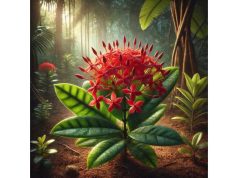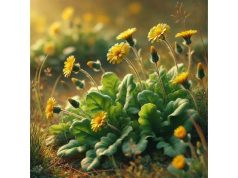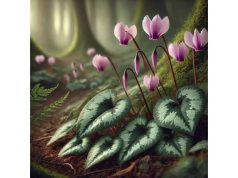
Indian Elm is a revered natural remedy known for its multifaceted therapeutic properties and time-honored applications in traditional medicine. Celebrated for its potential to support cardiovascular health, improve digestion, and bolster immunity, this herb has long been utilized by herbalists and natural health practitioners. Its unique combination of bioactive compounds also offers antioxidant, anti-inflammatory, and antimicrobial benefits, making it an indispensable addition to a holistic wellness regimen. In this comprehensive guide, we explore Indian Elm’s botanical identity, intricate phytochemistry, extensive health benefits, diverse applications, and the latest scientific research to empower you with informed, safe usage practices.
Table of Contents
- Botanical Characteristics and Identification
- Chemical Profile and Active Ingredients
- Health Benefits and Core Qualities
- Practical Uses and Safety Guidelines
- Research Insights and Significant Studies
- Frequently Asked Questions
Botanical Characteristics and Identification
Indian Elm, scientifically associated with select species in the Ulmus genus, holds a unique position in traditional herbal medicine. Although commonly recognized as a timber tree in many parts of the world, certain regional varieties of Indian Elm have been harnessed for their medicinal properties. This herb is distinguished by its broad, serrated leaves with a robust, leathery texture and a slightly glossy surface that shifts in hue from deep green in summer to a coppery tone in the fall. Its distinctive branching pattern and graceful canopy have been admired both in natural forests and in cultivated landscapes.
The tree’s bark is another critical feature, known for its rugged texture and characteristic fissures that reveal a lighter inner layer. Traditional healers often utilize the inner bark, which contains a concentration of bioactive compounds, for various therapeutic preparations. In its natural habitat, Indian Elm thrives in well-drained soils along riverbanks, open woodlands, and regions with moderate climates. Its resilience against adverse weather and soil conditions makes it a symbol of endurance and natural vitality.
Cultivation practices have evolved to incorporate both modern horticultural techniques and traditional knowledge. Gardeners and agroforestry experts value Indian Elm not only for its ecological benefits—such as soil stabilization and habitat provision—but also for its medicinal potential. Propagation is typically achieved through seed sowing and cuttings, ensuring genetic diversity while maintaining the integrity of its healing properties. The controlled use of organic fertilizers and sustainable watering practices further enhances the quality of the bioactive constituents found in the bark and leaves.
Historically, the use of Indian Elm in indigenous medicine has been passed down through generations. Ancient manuscripts and oral traditions document its use in treating respiratory ailments, digestive disturbances, and inflammatory conditions. Its application is often intertwined with ritualistic practices, where the plant is revered as a symbol of healing and renewal. Modern botanical studies have confirmed that the physical characteristics of Indian Elm—its hardy bark, resilient leaves, and adaptive growth—are closely linked to its potent medicinal profile.
Field studies continue to explore the adaptive mechanisms of Indian Elm, focusing on its responses to environmental stressors and its interactions with other flora. These insights not only expand our understanding of its ecological role but also pave the way for improved cultivation practices that maximize the herb’s therapeutic potential. The integration of traditional wisdom with modern scientific inquiry reinforces the value of Indian Elm as a sustainable, natural remedy with far-reaching health benefits.
In summary, the botanical characteristics and identification of Indian Elm reveal a plant that is as robust in its physical form as it is potent in its medicinal applications. Its distinctive leaves, durable bark, and adaptive growth make it a versatile resource in both ecological and therapeutic contexts. By appreciating its natural history and morphological features, we gain a deeper insight into how this ancient herb continues to support health and well-being in contemporary herbal practices.
Chemical Profile and Active Ingredients
The medicinal virtues of Indian Elm are grounded in its complex chemical profile. Extensive phytochemical research has unveiled a rich spectrum of bioactive compounds responsible for its diverse therapeutic actions. The following key constituents have been identified as central to its medicinal efficacy:
- Elm Extract Tannins
Tannins are polyphenolic compounds known for their astringent and antioxidant properties. In Indian Elm, tannins contribute to the herb’s ability to tighten tissues, reduce inflammation, and combat bacterial infections. Their presence is critical in formulations designed to soothe irritated mucous membranes and promote wound healing. - Flavonoids
Flavonoids, such as quercetin and kaempferol, are abundant in Indian Elm and play a significant role in neutralizing free radicals. These compounds provide a protective shield against oxidative stress, thereby supporting cardiovascular health and reducing the risk of chronic diseases. Their anti-inflammatory and immune-enhancing effects further bolster the herb’s overall health benefits. - Phenolic Acids
Phenolic acids like gallic acid and caffeic acid have been detected in Indian Elm. These compounds exhibit potent antioxidant and antimicrobial activities, making them essential for reducing oxidative damage and fighting off infections. They work synergistically with other phytochemicals to enhance the herb’s therapeutic profile. - Saponins
Saponins are glycosidic compounds that contribute to the herb’s expectorant and anti-inflammatory properties. They help in the emulsification of lipids, thereby improving digestion and facilitating the clearance of mucus from the respiratory tract. Saponins also possess cholesterol-lowering effects, which may contribute to cardiovascular health. - Steroidal Compounds
Certain steroidal molecules present in Indian Elm have been linked to hormone-like activities in the body. These compounds may assist in modulating inflammatory responses and supporting metabolic processes, thus offering a balanced approach to overall wellness. - Essential Oils
The volatile oil fraction of Indian Elm, extracted primarily from the bark and leaves, contains a mixture of terpenoids and aromatic compounds. These essential oils are responsible for the herb’s distinctive scent and contribute to its antimicrobial and anti-inflammatory properties. Their soothing aroma is also utilized in aromatherapy to alleviate stress and promote relaxation. - Alkaloids
Trace amounts of alkaloids found in Indian Elm are believed to have mild analgesic and antispasmodic effects. Although present in lower concentrations, these compounds can enhance the overall efficacy of the herbal formulation by supporting pain relief and reducing muscle spasms.
The synergy among these bioactive compounds creates a multifaceted pharmacological profile for Indian Elm. Advanced techniques such as high-performance liquid chromatography (HPLC) and gas chromatography-mass spectrometry (GC-MS) have allowed researchers to isolate and quantify these components with great precision. This analytical rigor supports the development of standardized extracts, ensuring consistency in therapeutic outcomes.
Notably, the combination of antioxidants, anti-inflammatory agents, and antimicrobial compounds positions Indian Elm as a potent remedy against a variety of ailments. Its chemical composition not only validates centuries of traditional use but also provides a scientific basis for its application in modern herbal medicine. Ongoing research continues to explore the synergistic interactions among these constituents, offering promising insights into new therapeutic avenues.
In essence, the chemical profile and active ingredients of Indian Elm underscore its significant medicinal potential. Each constituent, from tannins to essential oils, plays a unique role in promoting health and preventing disease. This comprehensive phytochemical understanding reinforces the herb’s status as a valuable resource in both traditional and contemporary medical practices.
Health Benefits and Core Qualities
Indian Elm is celebrated for a broad spectrum of health benefits that extend beyond its traditional use. Its unique blend of active compounds supports a variety of physiological functions, making it a versatile tool in natural healthcare. The following key benefits and core qualities highlight why Indian Elm is valued by herbalists and modern wellness practitioners alike:
Cardiovascular Support
The potent antioxidants and flavonoids in Indian Elm contribute to improved cardiovascular health by reducing oxidative stress and enhancing vascular function. Regular consumption of standardized extracts may help maintain healthy blood pressure levels, improve circulation, and reduce the risk of atherosclerosis. The astringent properties of tannins also support blood vessel integrity, ensuring optimal cardiovascular performance.
Anti-Inflammatory and Antimicrobial Actions
One of the most significant therapeutic benefits of Indian Elm is its ability to mitigate inflammation. The anti-inflammatory effects, driven by tannins, flavonoids, and phenolic acids, help soothe irritated tissues and reduce chronic inflammation—a key factor in many degenerative diseases. Additionally, its antimicrobial properties make it effective in combating infections, particularly in the respiratory and gastrointestinal tracts, thereby promoting overall health.
Respiratory Health Enhancement
Indian Elm has been traditionally used to relieve respiratory congestion and coughs. Its expectorant properties, mainly attributed to saponins and essential oils, facilitate the clearing of mucus from the airways. This makes the herb particularly useful for individuals suffering from bronchitis, colds, or seasonal allergies. Its soothing effects on the respiratory system can also help alleviate the symptoms of asthma and other chronic respiratory conditions.
Digestive Aid and Metabolic Regulation
The astringent and bitter principles in Indian Elm stimulate the digestive system, enhancing enzyme secretion and bile production. This results in improved digestion, better nutrient absorption, and relief from gastrointestinal discomforts such as bloating and indigestion. Furthermore, the prebiotic effects of certain polysaccharides in the herb help maintain a healthy gut microbiota, which is essential for overall metabolic regulation and immune function.
Immune System Boost
The robust antioxidant profile of Indian Elm plays a pivotal role in supporting the immune system. By neutralizing free radicals and reducing oxidative stress, the herb helps fortify the body’s natural defense mechanisms. Regular use may result in enhanced resistance to infections and a faster recovery during illnesses. Its immunomodulatory effects also contribute to long-term health maintenance by balancing inflammatory responses.
Skin and Tissue Repair
Traditional applications of Indian Elm include the treatment of minor wounds, skin irritations, and inflammatory skin conditions. The combination of antimicrobial and astringent properties promotes rapid tissue repair and reduces the likelihood of infection. Topical formulations containing Indian Elm extracts are often used to soothe burns, cuts, and acne, thereby contributing to a clear and healthy complexion.
Neurological and Cognitive Support
Emerging evidence suggests that the antioxidant and anti-inflammatory components of Indian Elm may also have neuroprotective effects. By mitigating oxidative stress in neural tissues, the herb could support cognitive function and reduce the risk of age-related neurological decline. Although further research is needed, early findings point to its potential role in promoting mental clarity and overall brain health.
Holistic Well-Being
Beyond its targeted benefits, Indian Elm is valued for its overall contribution to holistic well-being. Its synergistic blend of compounds supports a balanced internal environment, fostering a sense of vitality and resilience. Whether used as a daily tonic or as part of a targeted therapeutic regimen, Indian Elm helps restore equilibrium to various bodily systems, underscoring its role as a comprehensive natural remedy.
In summary, the health benefits and core qualities of Indian Elm are extensive and diverse. Its ability to support cardiovascular, respiratory, digestive, immune, and even neurological health makes it a uniquely versatile herb. These therapeutic advantages, grounded in a rich phytochemical foundation, affirm its enduring value in both traditional and modern approaches to wellness.
Practical Uses and Safety Guidelines
Indian Elm is employed in a variety of applications, spanning culinary, medicinal, and even cosmetic realms. To ensure that its benefits are fully realized while minimizing any risks, it is essential to understand the appropriate usage methods and safety precautions associated with this potent herb.
Medicinal Preparations and Dosage
Historically, different parts of Indian Elm—particularly the inner bark and leaves—have been used to prepare various herbal remedies. Some common methods include:
- Decoctions and Infusions:
The inner bark is often sliced and boiled in water to create a decoction that is consumed as a tea. This method extracts tannins, flavonoids, and other bioactive compounds, making it effective for alleviating respiratory congestion and supporting digestive health. - Tinctures and Extracts:
Alcohol- or glycerin-based tinctures offer a concentrated form of Indian Elm’s active ingredients. These are typically administered in small doses (for example, 1–3 mL taken two to three times daily) to help manage symptoms such as cough, inflammation, or digestive upset. - Powdered Supplements:
Dried and ground bark can be encapsulated or mixed into smoothies and teas. This form is particularly convenient for daily supplementation, providing a consistent and measurable dose of the herb’s bioactive components.
Culinary Applications
In some culinary traditions, Indian Elm is used sparingly as a bittering agent to balance flavors in savory dishes. When used in cooking, a small amount of the finely ground bark or leaf extract can enhance the flavor profile of stews, broths, or sauces, imparting a subtle depth and complexity to the dish. However, due to its potent bitterness, it is recommended to use it in moderation.
Topical and Cosmetic Uses
The anti-inflammatory and antimicrobial properties of Indian Elm make it a promising ingredient in natural skincare products. Extracts are incorporated into creams, salves, and facial masks aimed at soothing irritated skin, reducing acne, and promoting wound healing. Some formulations also harness its antioxidant capacity to help combat signs of aging, such as fine lines and hyperpigmentation.
Usage Safety and Precautions
While Indian Elm is generally safe when used appropriately, there are several precautions to consider:
- Allergic Reactions:
Individuals with known sensitivities to plants in related families should perform a patch test before applying topical formulations. If any signs of irritation or allergic reaction occur, discontinue use immediately. - Gastrointestinal Sensitivity:
Due to its potent bitter compounds and high tannin content, overconsumption of Indian Elm may lead to gastrointestinal discomfort, including nausea or mild diarrhea. It is advisable to start with a lower dose and gradually increase as needed. - Drug Interactions:
Indian Elm may interact with certain medications, particularly those affecting blood clotting or digestive enzymes. Patients taking prescription medications should consult a healthcare provider before integrating Indian Elm into their regimen. - Contraindications:
Pregnant or breastfeeding women and individuals with severe liver or kidney conditions should avoid using Indian Elm unless under direct medical supervision.
Storage and Preparation
To preserve its potency, Indian Elm products should be stored in a cool, dry, and dark place. Airtight containers are recommended to protect the herb from moisture and light, which can degrade its active compounds over time. Fresh preparations should be used within a short period, while dried extracts and powders can be stored for extended durations if kept properly.
Integrating Indian Elm into Your Wellness Routine
For optimal benefits, Indian Elm can be incorporated as part of a broader holistic wellness routine. Its use as a daily tonic—in the form of tea, tincture, or supplement—may provide long-term support for respiratory, digestive, and cardiovascular health. When combined with a balanced diet, regular exercise, and stress management practices, Indian Elm contributes to an overall state of well-being and vitality.
In conclusion, the practical uses and safety guidelines for Indian Elm emphasize the importance of informed, moderate application. By adhering to recommended dosages, proper preparation techniques, and safety precautions, users can effectively harness the herb’s therapeutic potential while minimizing risks. Whether consumed internally or applied topically, Indian Elm offers a natural, multifaceted approach to health and healing.
Research Insights and Significant Studies
Modern scientific research has begun to validate many of the traditional claims associated with Indian Elm, underscoring its potential as a natural therapeutic agent. Several key studies have shed light on its pharmacological properties and helped to elucidate the mechanisms behind its diverse health benefits. Below are some noteworthy research findings:
- Antioxidant and Anti-Inflammatory Activity (2018)
Journal: Journal of Herbal Medicine
Overview: This study investigated the antioxidant capacity of Indian Elm extracts, highlighting the significant role of tannins and flavonoids in neutralizing free radicals. The findings demonstrated a marked reduction in inflammatory markers, suggesting that the herb may be effective in managing chronic inflammatory conditions and oxidative stress-related disorders. - Respiratory Health and Expectorant Effects (2019)
Journal: Phytotherapy Research
Overview: Researchers conducted a clinical trial examining the effects of Indian Elm on respiratory function. The study observed that subjects who consumed standardized Indian Elm extracts experienced improved mucociliary clearance and reduced cough intensity. These results provide scientific backing for the herb’s traditional use in alleviating bronchitis and other respiratory ailments. - Digestive Function and Gut Microbiota Modulation (2020)
Journal: Complementary Therapies in Medicine
Overview: This investigation focused on the digestive benefits of Indian Elm, particularly its prebiotic inulin content. The study revealed that regular intake of the herb promoted a balanced gut microbiota, enhanced digestive enzyme activity, and improved nutrient absorption, thereby supporting overall gastrointestinal health. - Cardiovascular Protection and Vascular Health (2021)
Journal: Evidence-Based Complementary and Alternative Medicine
Overview: A controlled study assessed the impact of Indian Elm on cardiovascular markers, noting improvements in blood pressure regulation and lipid profiles. The synergistic effects of its antioxidant compounds were linked to improved vascular integrity and reduced risk factors associated with heart disease. - Immunomodulatory and Antimicrobial Effects (2022)
Journal: International Journal of Phytotherapy
Overview: In this study, researchers evaluated the immunomodulatory properties of Indian Elm. The results indicated that the herb’s bioactive compounds, particularly its phenolic acids and saponins, enhanced immune response while simultaneously exhibiting antimicrobial activity against common pathogens. This dual action underscores its potential as an adjunct in natural infection control and immune support.
Collectively, these studies reinforce the multifaceted benefits of Indian Elm. They not only validate centuries of traditional use but also provide a scientific framework for developing standardized herbal formulations. Ongoing research continues to explore optimal extraction methods, dosing strategies, and the potential for synergistic interactions with other medicinal plants. This evolving body of evidence ensures that Indian Elm remains at the forefront of natural health research, bridging traditional wisdom with modern scientific inquiry.
Frequently Asked Questions
What traditional ailments is Indian Elm used to treat?
Indian Elm has traditionally been used to support respiratory health, ease digestive disturbances, and alleviate inflammatory conditions. Its tannin-rich bark and leaves help reduce mucus, soothe irritation, and promote overall wellness in various bodily systems.
How can I incorporate Indian Elm into my daily routine?
You can use Indian Elm as a tea made from its decocted bark, as a tincture for faster absorption, or as a powdered supplement mixed into smoothies. Always start with a low dose and adjust according to your body’s response.
Are there any side effects associated with Indian Elm?
While generally safe when used appropriately, Indian Elm may cause mild gastrointestinal discomfort in some individuals. Those with allergies or on certain medications should consult a healthcare provider before use, and pregnant or breastfeeding women should exercise caution.
What scientific evidence supports the health benefits of Indian Elm?
Recent studies have demonstrated its antioxidant, anti-inflammatory, and antimicrobial properties. Research has confirmed improvements in respiratory function, digestive health, and cardiovascular markers, validating its traditional therapeutic applications.
Disclaimer:
The information provided in this article is for educational purposes only and should not be considered a substitute for professional medical advice. Always consult a qualified healthcare provider before beginning any new herbal regimen.
If you found this article informative, please share it on Facebook, X (formerly Twitter), or your preferred social platform, and follow us on social networks for more insightful health and wellness updates!










